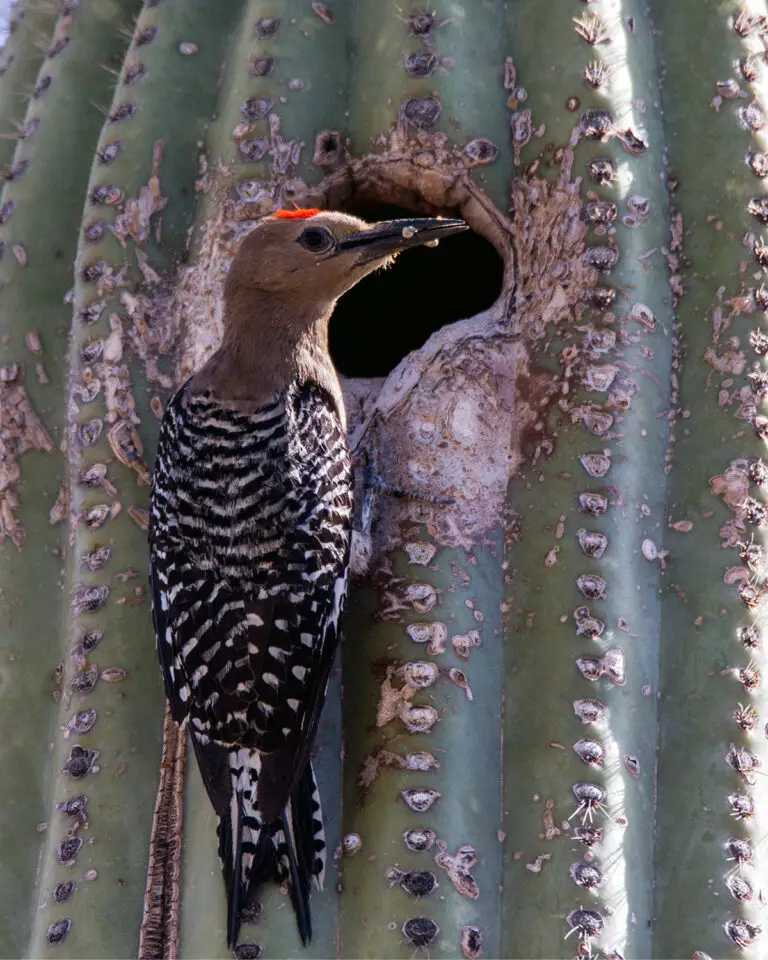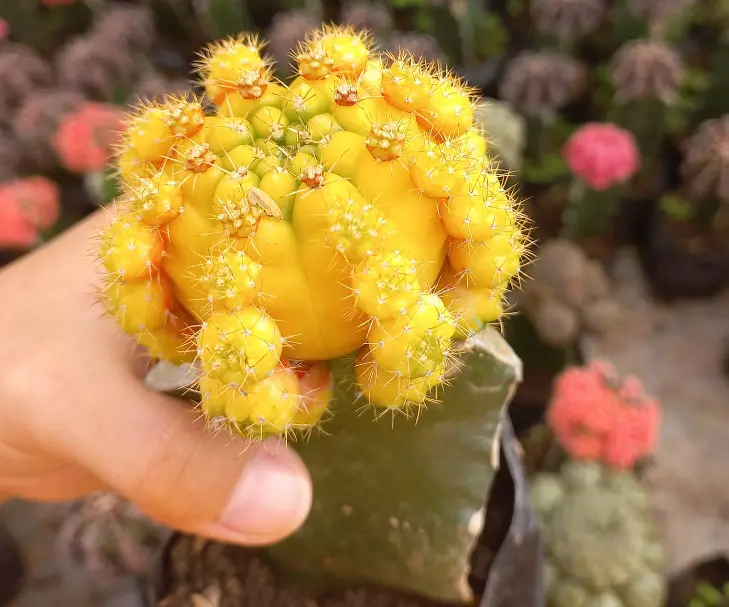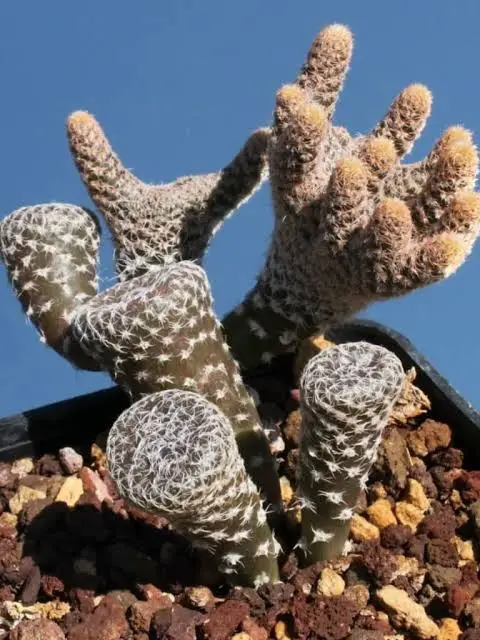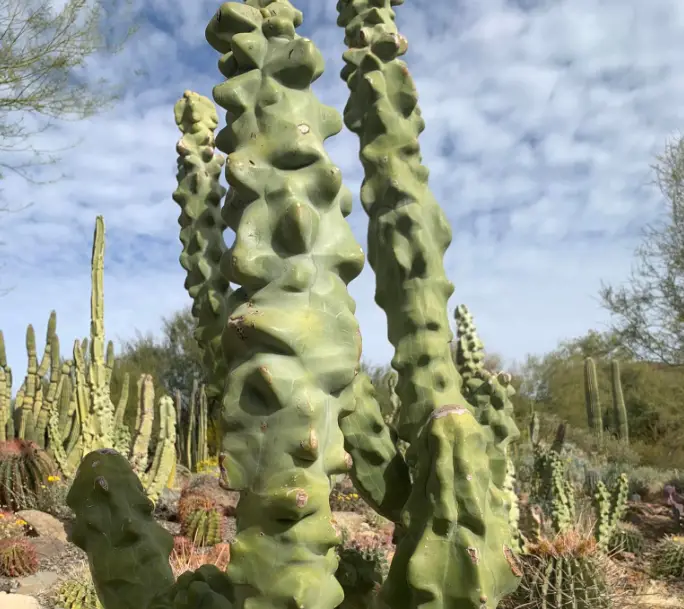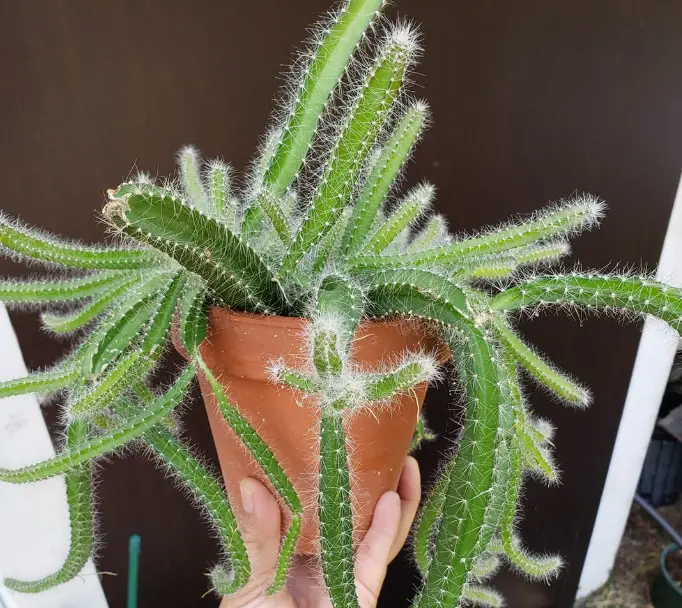Peruvian Apple Cactus Care and Propagation Guide
The Peruvian apple cactus botanically known as Cereus repandus is a majestic plant that makes a great addition to any landscape or garden. This night-blooming cereus has an attractive appearance with its spiny stems and showy flowers.
While it’s a tall plant that can reach up to 30ft in height, it takes many years to reach its full size. The Peruvian apple cactus growth rate is even slower in a container or indoor setting. Nevertheless, this cactus has low maintenance needs and can live for many years with the right care.
Here is a summary of what you need to know about the Peruvian apple cactus.
| Names | Cereus repandus (botanical), Apple Cactus, Hedge cactus, and Peruvian Cactus, among others. |
| Plant size | Can grow up to 30ft in the wild and 3ft indoors. |
| Temperature | Prefers 60-85°F (15-29°C) during spring to fall and 50- 55°F (10- 13°) during winter. |
| Soil | Well-draining soil mix for cactuses and succulents, slightly acidic to neutral pH. |
| Growth rate | It’s a slow grower with approximately 2 to 3ft per year. |
| Humidity | Tolerant to low humidity levels but prefers a well-ventilated area. |
| Light | It prefers bright indirect sunlight, as direct sunlight can cause sunburn. |
| Propagation | Easily started from stem cuttings as using seed takes longer. |
| Blooming | Mature plants bloom in late spring to early summer. The fragrant white flowers only open during the night. |
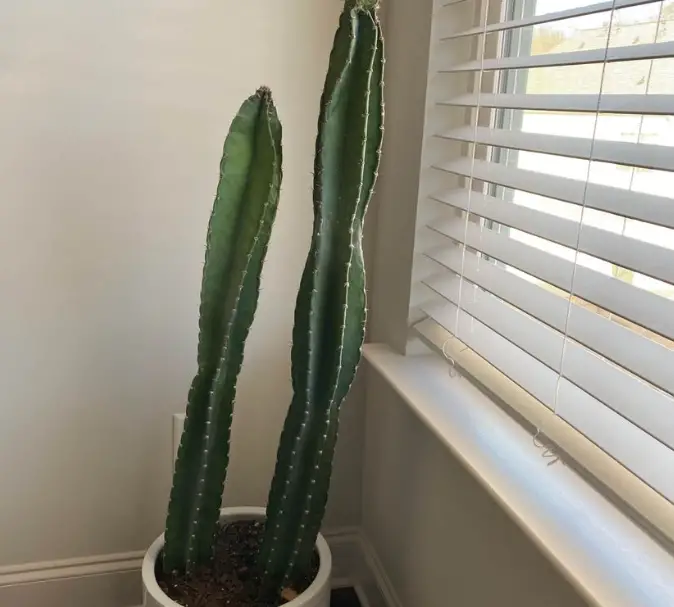
Peruvian apple cactus care
Cereus repandus is a relatively easy-to-care-for indoor plant. To enjoy the full benefits of this plant, here is what you need to provide:
Bright light
Peruvian cactus prefers bright indirect light to thrive. Place it near a south-facing window to receive maximum light. Make sure to move the plant to a shade when the sun gets hot. Intense direct sunlight can cause cactus sunburn or yellowing of the leaves.
This plant highly depends on bright light for growth and flowering. In poor lighting, it may become leggy or stunted. It is necessary to use grow lights in areas with lower light levels. Whatever lighting method you use, rotate the plant every other week to prevent it from leaning on one side.
Watering
The Peruvian apple cactus is native to arid regions and well-adapted to drought. It can go for longer periods without water but should be watered deeply when the soil is completely dry. Before watering, ensure the top inch of the soil feels dry to the touch.
When it’s time to water, give the plant a thorough soaking until water drains out of the bottom of the pot. Avoid the plant sitting in any standing water as this can cause root rot, a condition caused by poor air supply around the roots. Additionally, don’t allow water to get on the stems, as it can cause fungal rot.
During winter, Cereus repandus needs less water than during spring and summer. It is important to keep the soil on the dry side, but do not let it dry out completely. Generally, it’s better to underwater the cactus than overwater it.
Well-draining soil
All cacti plants prefer a soil mix with good drainage. Clay or heavily compacted soil isn’t suitable for the Peruvian apple cactus. This plant thrives in well-draining, slightly acidic soil. A soil pH test kit can be used to determine the soil’s acidity or alkalinity and adjust it if necessary.
It is important to repot the cactus in fresh soil mix if your cactus potting soil won’t absorb water or retains moisture longer than expected. Adding more sand to the mix may also help improve soil drainage.
Ideal temperature
Peruvian cactus can withstand a wide range of temperatures. When grown indoors, the ideal temperature should be between 60-85°F (15-29°C) during spring to fall and 50- 55°F (10- 13°) during winter.
Temperatures below 50°F (10°C) can cause damage or death to the plant. During the cold winter, the cactus should be sheltered indoors or protected from frost. On the other hand, temperatures higher than 85°F (29°C) can cause stress and slow down the cactus’ growth.
Fertilizing
During the growing season (spring and summer), you can fertilize the cactus using a balanced, water-soluble succulents fertilizer every four weeks to boost the growth. Be sure to follow the instructions on the product label for the appropriate mixing rate. Cacti don’t need fertilizer during winter.
Humidity
Unlike most plants, the Peruvian apple cactus prefers low humidity levels. Ensure the humidity around the plant is about 40-50%. High humidity levels can cause fungal infections, and you’ll find your cactus turning white or rotting. Additionally, keep the plant away from sources of heat or cold drafts.
Inspection
Regular monitoring of your plants is highly recommended. Through it, you can easily tell when the plant is facing a problem of pests and diseases. Mealybugs, scale insects, and spider mites feed on cactus sap and can cause severe damage to the plant if not controlled.
Fungal infection and root rot are fatal conditions that can only be controlled when identified early. In most cases, removal of the affected section may save the plant. Severely damaged plants should also be isolated to curb the spread of a disease or pests.
Propagating Peruvian apple cactus
The Peruvian apple cactus can be propagated through seeds or cuttings. However, the seed option takes longer to start new plants, while stem cuttings take shorter. No matter which method you choose, it’s best to propagate the cactus in late spring or summer when it’s actively growing.
Seed propagation
- Collect the seeds from mature cactus fruit.
- Clean the seeds and let them dry completely, then plant them in a well-draining cactus mix.
- Place the container in a warm, bright location and keep the soil moist but not waterlogged.
- Be patient, as the seeds may germinate for several weeks or months.
Note: The time it takes for seeds to germinate can vary depending on several factors, such as soil temperature, moisture, and the amount of light provided.
Propagation through cuttings
- Cut a healthy stem from the mother plant, ideally a few inches off the stem top.
- Allow the cut-end of the cutting to callus over (dry out) for a few days before planting in the well-draining cactus mix.
- Place the cutting in a bright location and water sparingly to keep the soil moist and not soggy until roots or new growth are formed.
The Peruvian apple cactus can be pruned when it starts to grow taller or bushier. Instead of throwing away the cut sections, you can use them for propagating new plants that you can add to your indoor collection or gift friends and family members.
Final Thought
Cereus repandus is a hardy plant that is relatively easy to care for. To ensure healthy growth and fruit production, it is important to provide the plant with well-draining soil, bright light, and occasional watering. Additionally, protect the cactus from extreme temperature and high humidity.
References
- “Cereus repandus,” The University of Arizona
- “Cacti as Landscape Plants,” The University of California
- “Growing Indoor Plants with Success,” University of Georgia
My name is Diane M Lewik, and I am the founder of this website. I am a degree holder in plant biology from the University of California – Berkeley. Over the years, I have cultivated a vast collection of succulents and I have learned a great deal about how to grow and care for these unique plants. Feel free to ask any questions in the comment section below.
